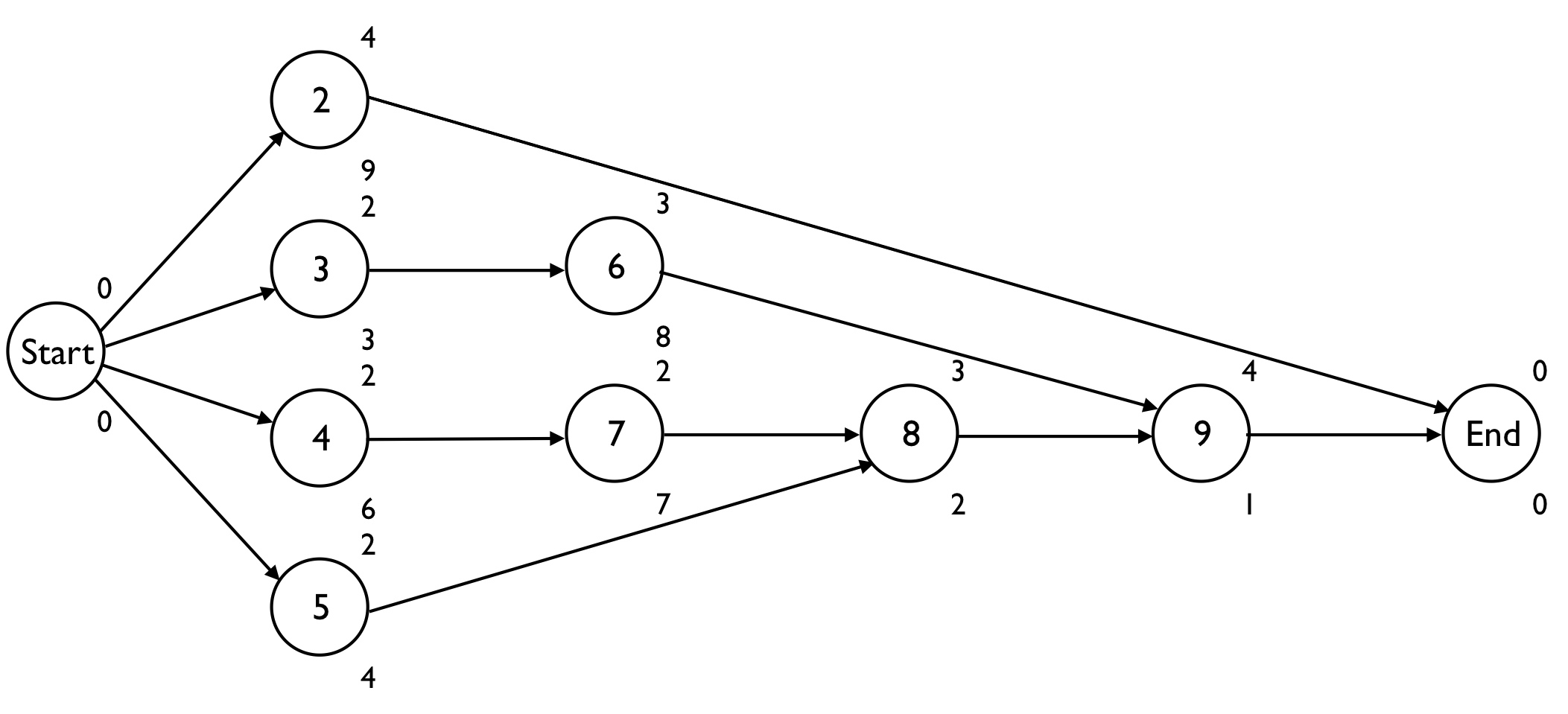What is my scheduling objective? Leveling the use of resources
Submitted by Mario Vanhoucke on Tue, 12/13/2011 - 13:23

When finishing this article, you can take a short "Test Yourself" quiz, to ensure you fully understood this topic.
Resource-constrained project scheduling involves the construction of an activity timetable, i.e. the determination of a start and finish time for each project activity, respecting the precedence relations and the limited availability of the renewable resources, while optimizing a predefined scheduling objective (see “Resource constrained project scheduling: What is my scheduling objective?”). In this article, the scheduling objective is assumed to be the leveling of the use of resources along the project duration.
Figure 1 displays a project network with 9 activities (plus a start and an end dummy node) and finish-start precedence relations between them. Each number above the node denotes the estimated duration of the activity while the number below the node is used to refer to the resource demand. It is assumed that the availability of the resource is restricted to ten units for all periods of the project.

?Figure 1: Project network with activity data
Scheduling objective: resource leveling
In figure 2, an earliest start schedule is shown with a lot of over-allocations, with peaks up to 25 units needed during periods 3 and 4. Solving resource conflicts results in activity shifts in time in order to schedule them at periods where resources are still available. When the scheduling objective is to level or balance the use of the renewable resources, the final schedule should have a total resource profile where upward or downward jumps are minimized and the use of resources is as balanced as possible.
?

Figure 2: The earliest start schedule of the project network of figure 1
Figure 3 displays a resource profile where activities are scheduled such that the use of resources is perfectly leveled, within the maximum availability of 10 units per period. Of course, this example displays an ideal situation where the use of resources is equal over all periods of the project, and hence, the schedule shows no upward or downward jumps over time. Moreover, the project duration is equal to the critical path length, which is also not always possible. Indeed, the critical path in figure 1 is equal to the activity sequence 4 - 7 - 8 - 9 which is equal to the critical chain. Obviously, in many cases, the critical chain will be longer than the critical path length when taking renewable resources into account (see “The critical path or the critical chain? The difference caused by resources”).
?

Figure 3: A resource-leveled schedule of the project network of figure 1
© OR-AS. PM Knowledge Center is made by OR-AS bvba | Contact us at info@or-as.be | Visit us at www.or-as.be | Follow us at @ORASTalks


